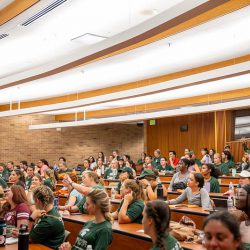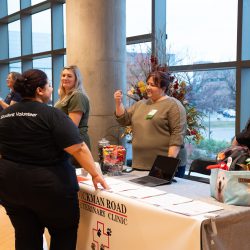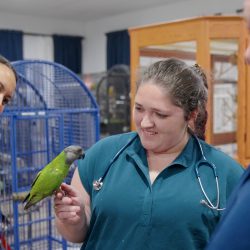While vacations with prolonged naps and Netflix binges were meant to be taken, a student from the MSU College of Veterinary Medicine thought she would mix it up a bit during her winter break. Second-year DVM Student Ilissa Chasnick spent her time off from formal classes in East Lansing to learn about emergency medicine and practice her hands-on clinical skills. Below, she describes what it was like to be a part of the MSU Small Animal Clinic’s Emergency and Critical Care team.

During winter break, I had the opportunity to work as a receiving student for the MSU Small Animal Clinic’s Emergency Service. I pursued this opportunity because I wanted to expand my hands-on clinical skills and, in turn, improve my confidence. As a receiving student, I had the same duties as a fourth-year veterinary medical student. (At MSU, third- and fourth-year DVM students are in the clinical-rotation phase of the curriculum.) My days as a receiving student for the Hospital looked something like this:
Every time a patient came into the Hospital, I triaged them to assess stability, the same way people get triaged by a nurse in a human medicine hospital. Triage includes considering what the patient was brought to the Hospital for and their basic vitals. I checked the patient’s heart and respiration rates, mucus membrane color, and capillary refill time to determine if the animal needed to be evaluated by a doctor immediately or not.
After the patient was triaged, they were taken into an examination room so I could take a full history. I asked the client tons of questions about their pet and listened to them tell me about how the patient had been doing at home. I then performed a full physical examination on the patient (this was one of my favorite parts of this job!).

While the College’s reinvented DVM curriculum has given me many opportunities to get hands-on experience with animals, this was the first time I conducted a full physical examination from nose to tail. It was an incredible learning experience, and all the clinicians were very helpful in teaching me how to better these skills.
Once patient history was taken and the examination was complete, I presented the patient and the case to whichever doctor was covering it. We then talked through the examination results together; the clinician asked me questions about the patient’s problem list, what my differential diagnoses were, which tests I wanted to run, and which kinds of treatments I was considering. I then got to assist with any treatments and procedures that were performed.
There’s no doubt that my role as a receiving student was beneficial to my education as a veterinary medical student. I had to critically think about what was going on with each case that I took, as well as walk through the case step-by-step—just like a real doctor would do! I became much more familiar with the teaching hospital atmosphere. I also became more comfortable with my doctoring abilities and my communication skills. This experience will be helpful when I take the College’s Clinical Reasoning course, as well as when I officially enter the clinical phase of the DVM Program. It was an incredible experience, and I learned a lot from everyone in the Hospital!



